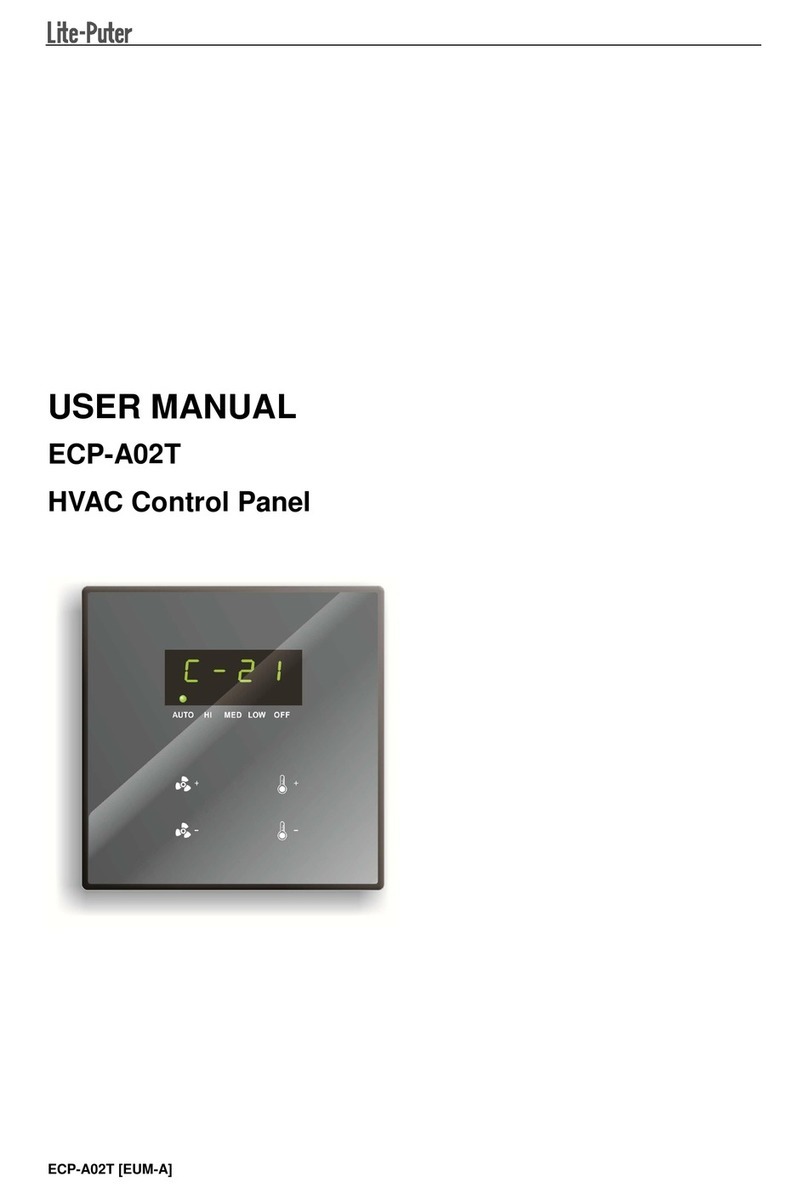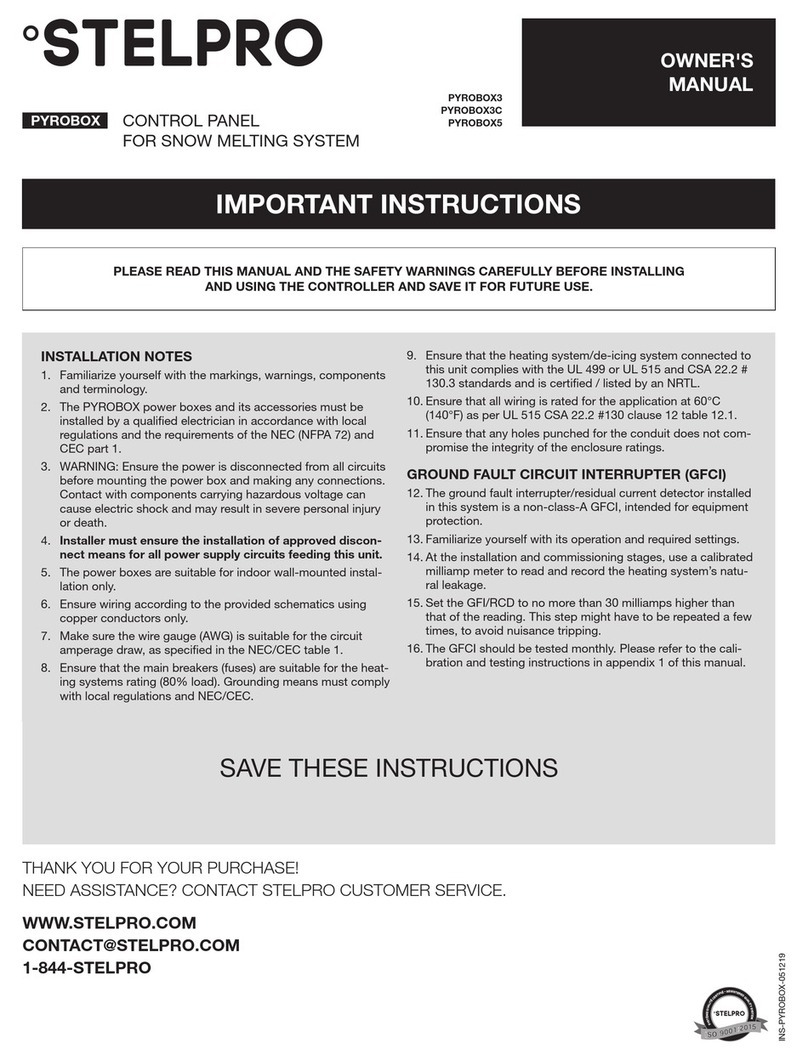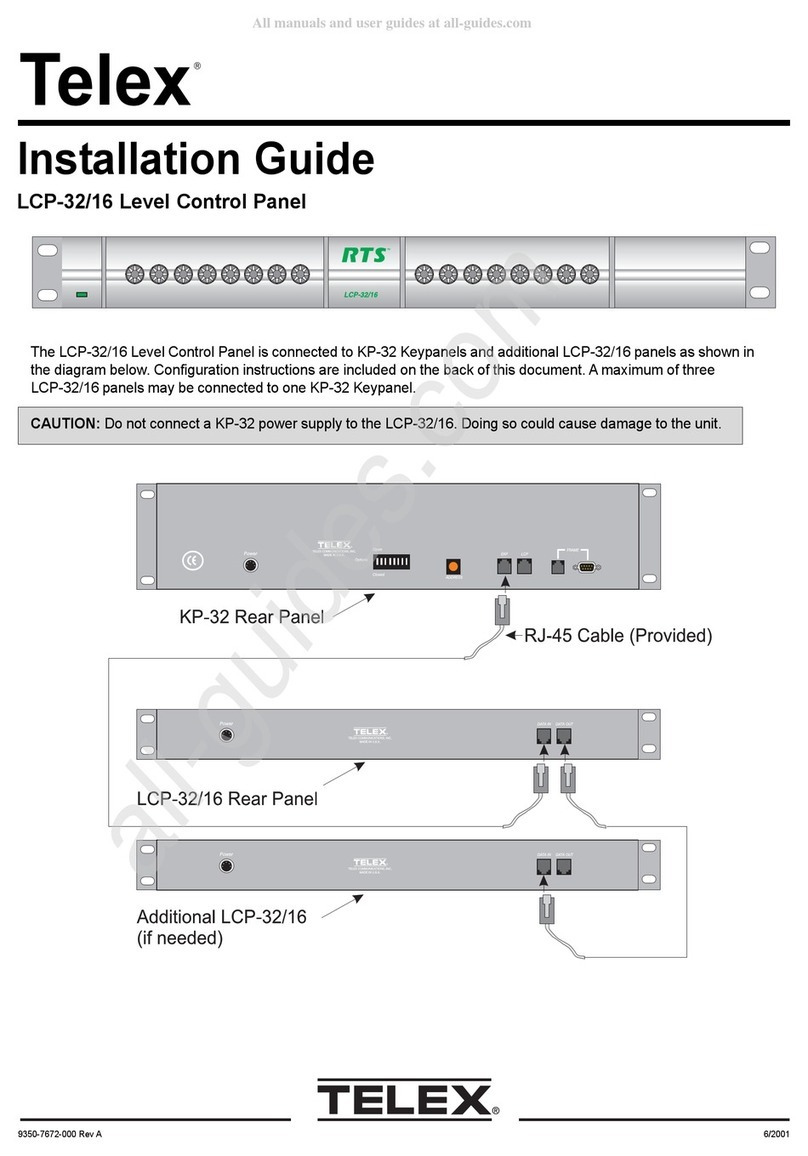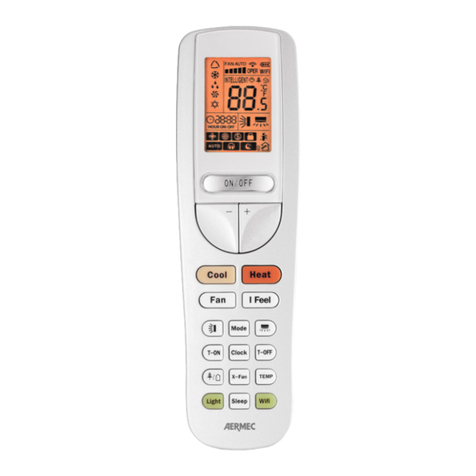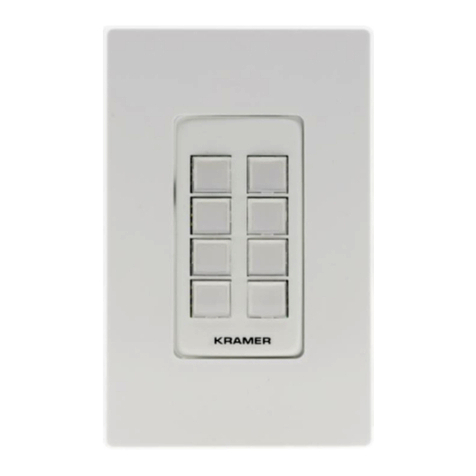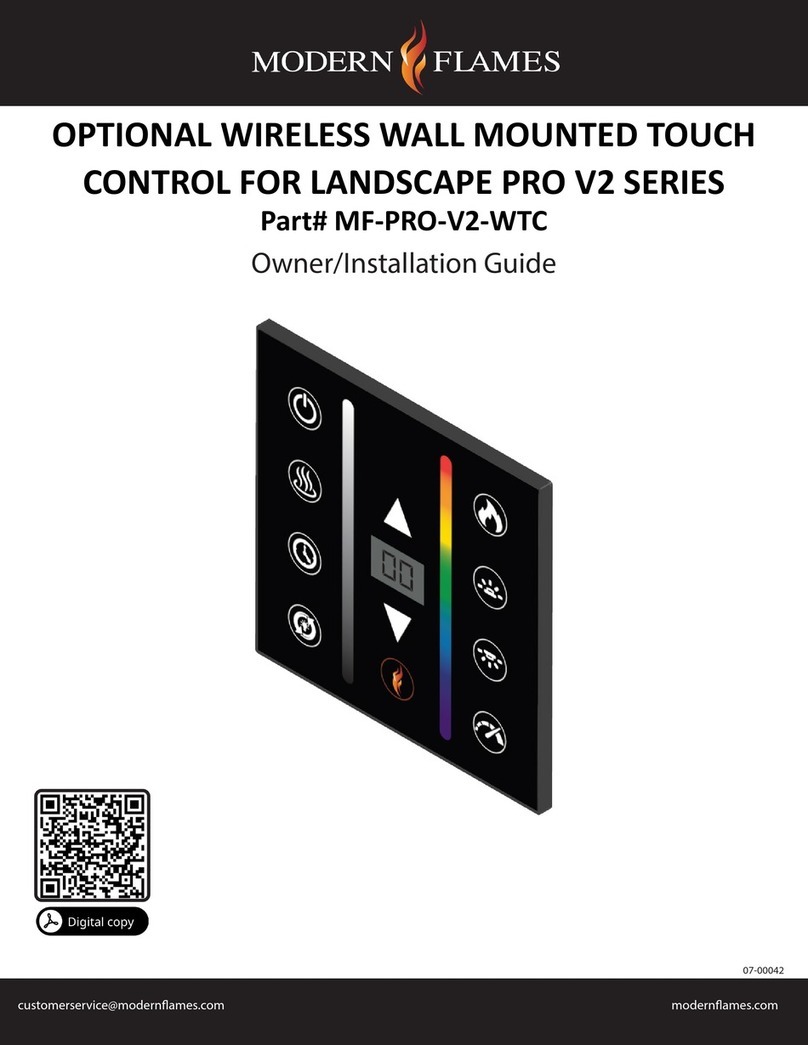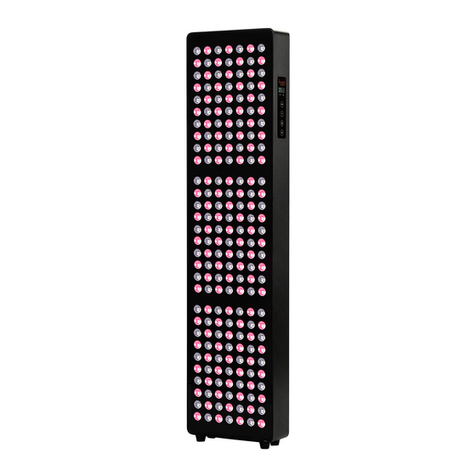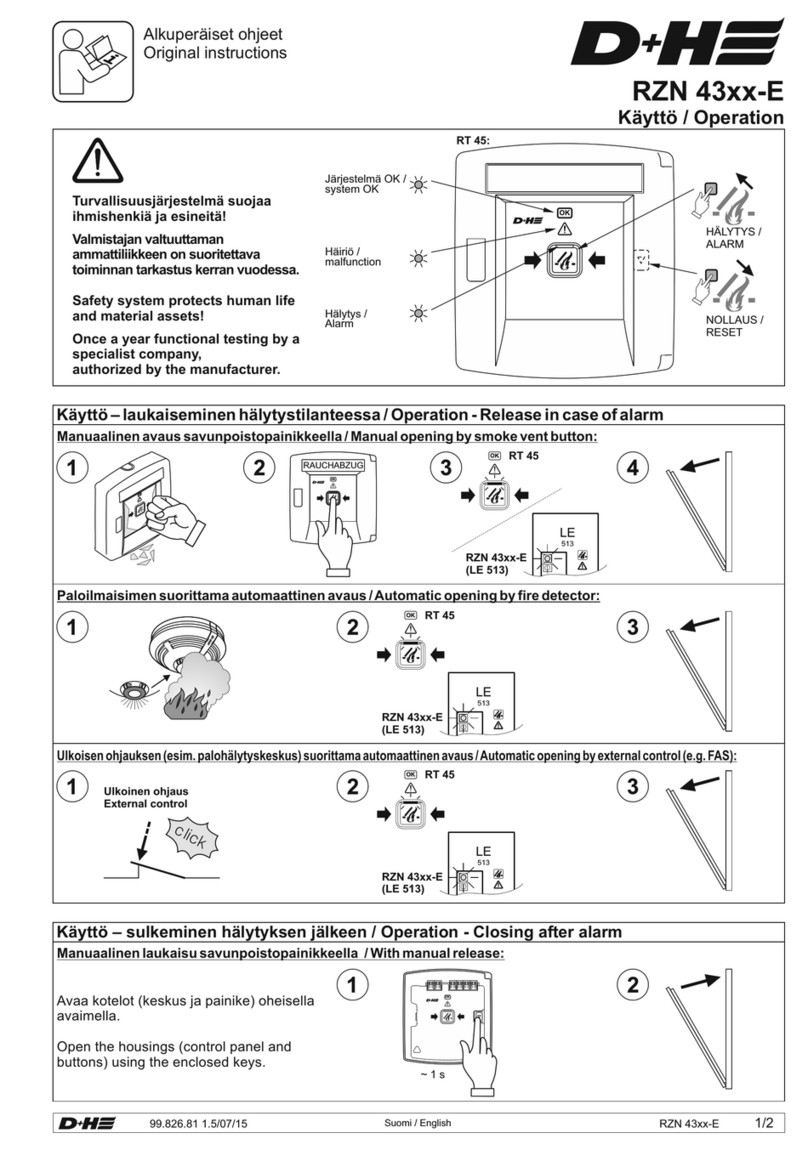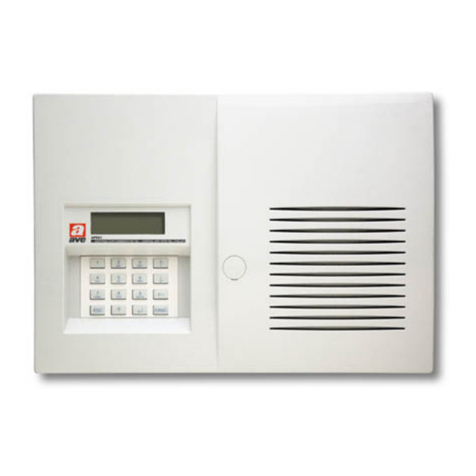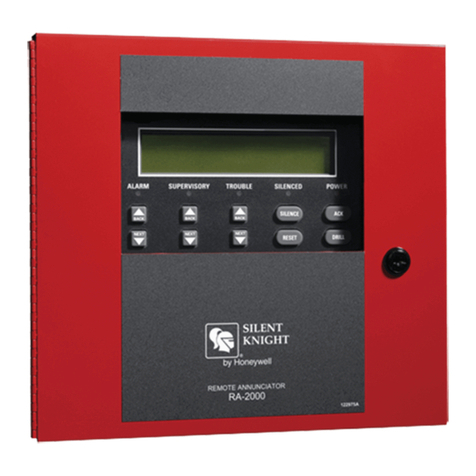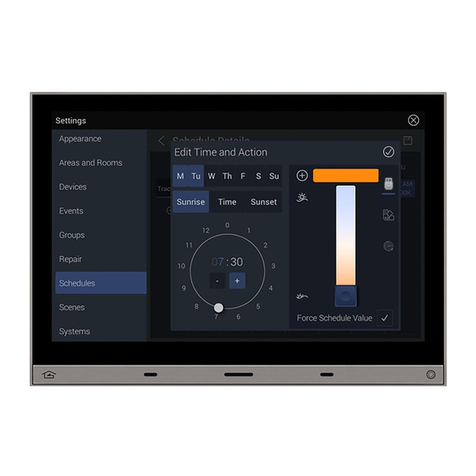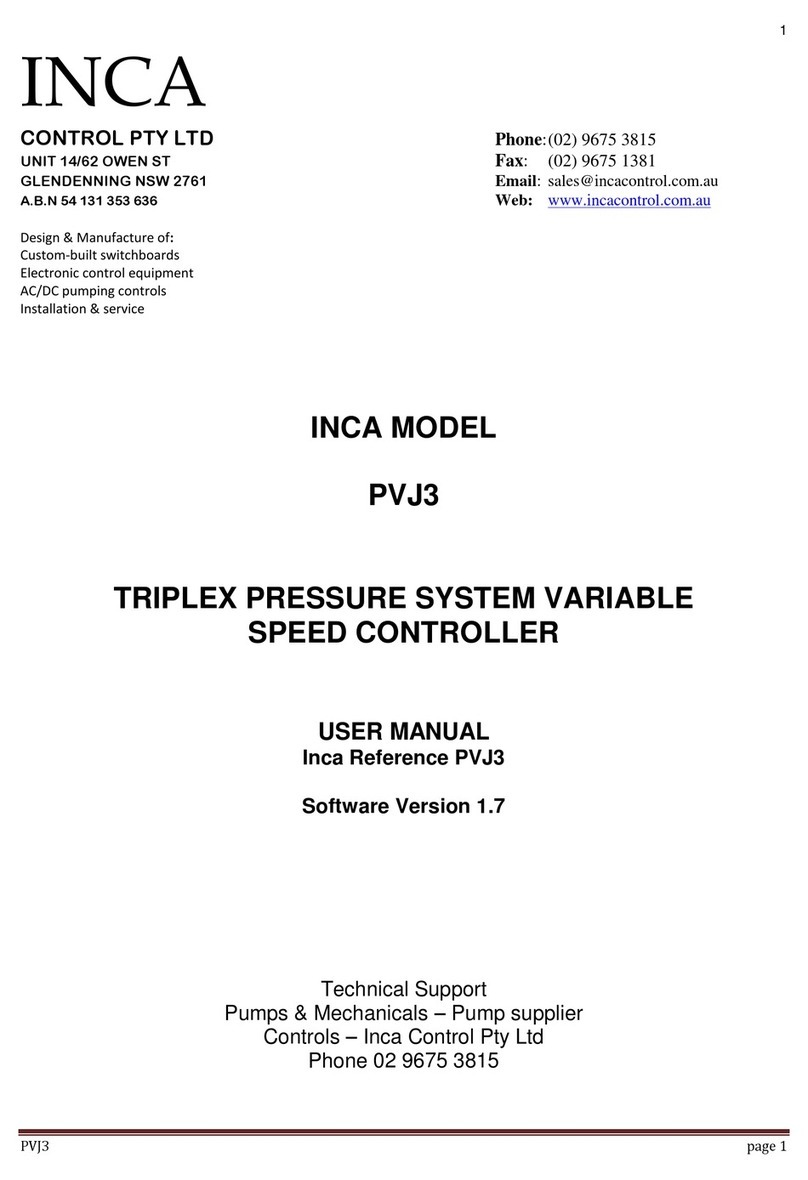NetworX NX-8E-CF Installation manual

NetworX™Series
NX-8E-CF Control Panel
Installation and Startup

© 2005 GE Security
All rights reserved. NetworX™is a trademark of the GE companies.
These instructions do not purport to cover all details or variations in equipment nor to provide every possible contingency to
be met during installation, operation, and maintenance. If further information is desired or if particular problems arise that
are not covered sufficiently for the purchaser’s purpose, the matter should be referred to GE Security.
This document contains proprietary information of GE Security and is furnished to its customer solely to assist that
customer in the installation, testing, operations, and/or maintenance of the equipment described. This document shall not
be reproduced in whole or in part nor shall its contents be disclosed to any third party without the written approval of GE
Security.
Please refer to the current GE Security product catalog for detailed warranty information.
Main 800-727-2339 Technical Support 888-437-3287
Outside the US 903-845-6941 Sales & Literature 800-547-2556
Main Fax 903-845-6811 Web: www.gesecurity.com
SAFETY SYMBOL LEGEND
Warning
Indicates a procedure, practice, condition, or statement that, if not strictly observed, could result
in personal injury.
* This symbol indicates electrical warnings and cautions.
Caution
Indicates a procedure, practice, condition, or statement that, if not strictly observed, could result
in damage to or destruction of equipment or property.
** This symbol indicates general warnings and cautions.
Note
Indicates an essential or important procedure, instruction, condition, or statement.
Tip
Indicates a user tip. Provides helpful information that is not normally defined in regular use, but
from an experienced user.

Table of Contents
I. GENERAL DESCRIPTION................................................................................................................................................................................................................4
II. ORDERING INFORMATION...........................................................................................................................................................................................................4
III. BOARD INSTALLATION ..................................................................................................................................................................................................................4
IV. NX-8E-CF WIRING DIAGRAM......................................................................................................................................................................................................6
V. TERMINAL DESCRIPTIONS............................................................................................................................................................................................................7
KEYPAD MAXIMUM WIRE RUN ......................................................................................................................................................................................7
VI. BATTERY CALCULATION WORKSHEET....................................................................................................................................................................................8
VII. UNDERWRITERS LABORATORIES INFORMATION...............................................................................................................................................................9
VIII. GLOSSARY .......................................................................................................................................................................................................................................10
IX. PROGRAMMING THE CONTROL..............................................................................................................................................................................................13
ENTERING THE PROGRAM MODE..............................................................................................................................................................................13
SELECTING THE MODULE TO PROGRAM................................................................................................................................................................13
PROGRAMMING A LOCATION .....................................................................................................................................................................................13
EXITING A LOCATION......................................................................................................................................................................................................14
EXITING THE PROGRAM MODE...................................................................................................................................................................................14
X. LOADING FACTORY DEFAULTS...............................................................................................................................................................................................14
XI. ENROLLING MODULES AND KEYPADS ................................................................................................................................................................................15
XII. LQUICK START INSTALLATION ..................................................................................................................................................................................... 150
XIII. PROGRAMMING LOCATIONS ...................................................................................................................................................................................................15
Table XIII-1 COMMUNICATOR FORMAT SELECTIONS......................................................................................................................................15
REPORTING EVENTS TO PHONE NUMBER 1.........................................................................................................................................................15
REPORTING EVENTS TO PHONE NUMBER 2.........................................................................................................................................................16
REPORTING EVENTS TO PHONE NUMBER 3.........................................................................................................................................................17
XIV. DEFAULT ZONE TYPES (Configurations)..............................................................................................................................................................................19
Table XIV-1 AUXILIARY OUTPUT EVENT SELECTION .........................................................................................................................................24
XV. PROGRAMMING WORKSHEETS ..............................................................................................................................................................................................37
XVI. APPENDIX 1.....................................................................................................................................................................................................................................54
XVII. APPENDIX 2.....................................................................................................................................................................................................................................55
XVIII. APPENDIX 3.....................................................................................................................................................................................................................................56
XIX. APPENDIX 4.....................................................................................................................................................................................................................................57
XX. APPENDIX 5.....................................................................................................................................................................................................................................58
XXI. TELEPHONE COMPANY INTERFACE INFORMATION.......................................................................................................................................................58
XXII. NOTICES ...........................................................................................................................................................................................................................................59
XXIII. SPECIFICATIONS .....................................................................................................................................................................................................................BACK

NX-8E-CF CONTROL
4
I. GENERAL DESCRIPTION
The NetworX NX-8E-CF represents a new approach to security systems design. Drawing on our experience in the world market as the
largest exporter of USA manufactured controls, we have developed the most flexible, durable, and user-friendly control ever seen in our
industry. Featuring sophisticated software, which allows up to 240 users to interface with 192 zones, 8 partitions, and a host of integrated
fire, access, verification, and input/output modules, all reported with the most comprehensive and fast SIA and Contact ID formats. The
NetworX design allows a fully loaded system to be housed in one single metal enclosure, establishing for the first time, a logical solution
and design response to modular systems. Up to 32 modules can be added to expand the capabilities of the NX-8E-CF. For product
warranty information, please refer to the GE Security Product Catalog.
II. ORDERING INFORMATION
MINIMUM SYSTEM CONFIGURATION for local and central station protected premise unit UL Commercial Fire applications includes
these individual modules:
PART # DESCRIPTION MIN QTY
NX-8E-CF NX-8E-CF Control Only 1 ea
NX-148E-CF Alphanumeric LCD Keypad for Commercial Fire applications (red plastic) 2 ea
NX-870E Fire Supervision Module 1 ea
PART # DESCRIPTION
NX-8E-CF-KIT-7 NX-8E-CF COMMERCIAL FIRE KIT
Includes NX-8E-CF Control, (2) NX-148E-CF LCD Keypads, NX-870E Fire Supervision & 16.5V, 50VA Transformer
Other available NetworX modules:
NX-208E 2 Wire Smoke Loop Expander NX-508E —Eight Output Module
NX-216E 16 Zone Expander Module NX-540E —"Operator" Telephone Interface Module
NX-320E Smart Power Supply and Buss Extender NX-591E —Cellemetry Interface Module
NX-507E Seven Relay Module NX-2192E PinPoint ID Module
P-0003 RS232 Adapter Cable 8920 4-Wire Cable (For use on AUX 1-4)
—These products have not been tested and approved by Underwriters Laboratories, Inc.
III. BOARD INSTALLATION
Inside the can, several 2-holed insertion points have been constructed. This allows for either
vertical or horizontal placement of the modules. Notice that each insertion point has two sizes of
holes -a larger hole and a smaller hole.
Diagram 1: The black plastic PCB guides are grooved on one edge where the PC board will be
seated. The end with the half-moon protrusion fits into the larger hole. The smaller hole is for the
screw.
Diagram 2: Place the first black plastic PCB guide in the top insertion point, grooved edge
downward. The half-moon protrusion will be in the large hole. It does not require force. Insert one
of the provided screw into the smaller hole (from inside the can) to secure it in place. A
screwdriver should reach through the notch that runs the length of the guide to tighten the screw.
The second PBC guide should be positioned opposite the first (grooved edge up) and placed in the
lower insertion point, using the same procedures described above. Once mounted, screw it in
securely.
Diagram 3: The PC Board should slide freely in the grooves of both guides.

NX-8E-CF CONTROL 5
KIMPORTANT!
1. If separate power supplies are necessary to accommodate additional devices, safety standards require that each
power supply be prominently marked with adequate instructions for removing all power from the unit.
2. Dispose of used batteries according to the manufacturer’s instructions and/or local government authorities.
3. Installation personnel should thoroughly read and understand the installation instructions and the users manuals for
the panel and all the accessories to be included with the system before attempting to install a security system.
WARNING!
Suggested replacement batteries: Power Sonic #PS-12180 or Yuasa #NP4-18 battery. Observe polarity when installing a
new battery. Installing the battery backwards may cause damage to the panel. There is a risk of explosion if the battery is
replaced with an incorrect type.
NOTE
Electrical codes will vary depending upon the country and city where the system is installed. It is the installer’s
responsibility to ensure that the electrical installation is safe and conforms to all applicable codes, laws, or regulations. Only
qualified persons should connect this device to the mains supply.
STANDBY TIME TOTAL AUXILIARY CURRENT STANDBY BATTERY
CAPACITY
ALARM CURRENT
24 hours 1.9 Amps 51 AH 600 mA
1.25 Amps 34 AH 1 Amp
600 mA 17 AH 1 Amp
48 hours 900 mA 51 AH 1 Amp
600 mA 34 AH 1 Amp
300 mA 17 AH 1 Amp
72 hours 600 mA 51 AH 1 Amp
400 mA 34 AH 1 Amp
200 mA 17 AH 1 Amp
! Calculations based on three 17-Amp batteries.

NX-8E-CF CONTROL
6
IV. NX-8E-CF WIRING DIAGRAM

NX-8E-CF CONTROL 7
V. TERMINAL DESCRIPTIONS
TERMINAL DESCRIPTION
R1 House Telephone Ring (Grey).
R Telephone Ring (Red).
T Telephone Tip (Green).
T1 House Telephone Tip (Brown).
EARTH Earth Ground. Connect to a cold water pipe or a 6 to 10 foot driven rod.
AC AC input. Connect to a 16.5V, 40VA or 50 VA Class ll U.L. approved transformer.
BELL + & BELL -
If used as a siren output (default), the speaker rating should be 15 watt at 8 or 16 ohm, or 30/40 watt at 4, 8, or 16
ohms. If voltage output is selected in location 37, this output becomes voltage output, 12VDC, 1 Amp maximum
load. NOTE: A 3.3K ohm resistor may be required across the bell terminals when a 12 VDC siren is used. If no
resistor is used, you may experience voltage leakage into the siren, which will cause these devices to output a
small signal.
KP DATA Connect to the data terminal on the keypads and the expanders. Maximum number of devices (keypads +
expanders) is 32. See “Maximum Wire Run” chart below.
KP COM Connect to the Common terminal on the keypads and the expanders.
KP POS Connect to the POS terminal on the keypads and the expanders. Individually, this terminal is limited to 1 Amp.
Combined, this terminal and AUX PWR + are limited to 2 amps total current.
SMOKE+ Smoke detector power 12VDC, 1.5 amps maximum (For those jurisdictions which allow the Priority zone to be used
with smoke detectors.)
COM Connect negative wire of powered devices such as motion detectors and smoke detectors.
AUX PWR+ Connect positive wire of all powered devices except smoke detectors and keypads. Individually, this terminal is
limited to 1 Amp. Combined, this terminal and KP POS are limited to 2 amps total current.
ZONE 8
Connect to one side of zone 8 loop. Connect the other side to com terminal. Open or short causes alarm. Zone 8
may be used for a two-wire smoke detector using a 680 E.O.L. resistor. Connect one side to AUX PWR+ ONLY if
using 2-wire smoke. Refer to wiring diagram. Program location 37, segment 6, option 1.
COM Common (-) terminal for zones 7 & 8. (See the wiring diagram for examples.)
ZONE 7 Connect to one side of zone 7 loop. Connect the other side to COM terminal. Open or short causes alarm.
ZONE 6 - ZONE 1 Connect as described for zones 7 & 8. Only zone 8 can be a two-wire zone. (See the wiring diagram for examples.)
C Closed dry contact rated 1 Amp at 30 Volts.
RELAY2 NO Normally open dry contact rated 1 Amp at 30 Volts.
COM Common used to ground any devices connected to relays.
NC Normally closed dry contact rated 1 Amp at 30 Volts
RELAY1 C Closed dry contact rated 1 Amp at 30 Volts
NOTE: These terminals can be set for
12VDC. Install J12 for AUX1 and J13
for AUX2 (See terminal drawing.)
(See terminal
drawing)
AUX 1-
AUX 4
Connect negative lead of low current device [relay, LED (install 1K ohm resistor in series with LED), etc.].
Connect positive lead of device to AUX PWR +. Current is limited to 50mA when output is negative, and
250
µ
A when output is positive. Part number #8920 is 4-wire cable.
MAXIMUM WIRE RUNS
KEYPADS
(Note: These numbers are for one keypad at the end of the wire. When
connecting more than one keypad to the end of the wire, a higher gauge wire
will be required.)
IF CONNECTED TO
NX-8E-CF
IF CONNECTED TO
NX320-E
Length in
feet Wire Gauge (AWG) Wire Gauge (AWG)
250 24 22
500 20 18
1000 18 16
1500 16 14
2500 14 12
BATTERY
(when located external to the case)
Length in feet Wire Gauge (AWG)
2.5 20
4.5 18
11.5 14
TRANSFORMER
(Maximum line impedance from panel to mains
transformer <= 20 ohms)
Length in feet Wire Gauge (AWG)
3,000 14
6,000 12
10,000 10

NX-8E-CF CONTROL
8
VI. BATTERY CALCULATION WORKSHEET
Note: The Total Standby or Total Alarm Current cannot exceed 1.2 Amps. Current for the smoke loop must be deducted from the overall
available 1.2 Amps.
TOTAL STANDBY CURRENT
System Component Qty Standby Current TOTAL STANDBY CURRENT
NX-8E-CF 1 X 60mA = 60mA
NX-870E 1 X 20mA = 20mA
NX-148E X 75mA =
NX-208E Aux+ X 13mA =
NX-208E DCIN X 31mA =
NX-216E X 30mA =
NX-320E X 10mA =
NX-507E X 10mA =
NX-1700E X 40mA =
NX-2192E X 170mA =
OTHER (sensors, etc.)
TOTAL =
TOTAL ALARM CURRENT
System Component Qty Device Alarm Current TOTAL ALARM CURRENT
NX-8E-CF 1 X 210mA = 210mA
NX-870E 1 X 110mA = 110mA
NX-148E X 110mA =
NX-208E Aux+ X 53mA =
NX-208E DCIN X 31mA =
NX-216E X 60mA =
NX-320E X 10mA =
NX-507E X 310mA =
NX-1700E X 110mA =
NX-2192E X 170mA =
OTHER (sensors, etc.)
TOTAL =
STANDBY AMP HOURS
mA .001 Amp/mA Hrs Ah
Total Standby Current
(Step 1)
X Conversion Factor X Required Hours in
Standby
= Standby Amp Hours
ALARM HOURS
mA .001 Amp/mA Mins .0167 Hr/Min Ah
Total Alarm
Current (Step 2)
X Conversion Factor X Required Minutes in
Standby
X Conversion Factor = Alarm Hours
MINIMUM BATTERY POWER REQUIRED
mA Ah
Standby Amp
hours (Step 3)
+ Alarm Amp Hours
(Step 4)
= Minimum Battery Power
Required
TOTAL STANDBY BATTERY POWER
1.15
Minimum Battery
Power (Step 5)
X Battery Derating
Factor
= Total Standby Battery Power
Should no
t
exceed 1.
2
A
mps
each

NX-8E-CF CONTROL 9
VII. UNDERWRITERS LABORATORIES INFORMATION
The NetworX NX-8E-CF holds the following listings from Underwriters Laboratories (US and Canadian):
Type Type Service Type Signaling Model
L A, M, SS, WF NC NX-8E-CF
RS A, M, SS, WF NC NX-8E-CF
CS (protected premise unit) A, M, SS, WF NC NX-8E-CF
UL294 Access Control System Units (* requires the NX-1700E module)
UL365 Police Station Connected Burglar Alarm Units and Systems
UL609 Local Grade A Mercantile, Police Station Connect with Basic Line Security
(* requires #NX-003-C enclosure)
UL864 Control Units for Fire-Protective Signaling Systems
UL985 Household Fire Warning Systems & Units
UL1023 Household Burglary Alarm Systems & Units
UL1610 Grade B & C Central Station Burglar Alarm Unit
UL1637 Home Health Care Signaling Equipment
CAN/ULC-S303 Local Burglar Alarm Units and Systems
CAN/ULC-S304 Central and Monitoring Station Burglar Alarm Units
CAN/ULC-S545 Standard for Residential Fire Warning System Control Units
MINIMUM SYSTEM CONFIGURATION for UL 864 applications includes these individual modules:
PART # DESCRIPTION MIN QTY
NX-8E-CF NX-8E-CF Control Only 1 ea
NX-148E-CF Alphanumeric LCD Keypad for Commercial Fire applications (red plastic) 2 ea
NX-870E Fire Supervision Module 1 ea
All UL installations require the following:
At least one NX-8E-CF control panel.
At least two NX-148E-CF LCD keypads. Connect one to DATA/COM/POS and the other to DATA/COM/AUX+.
At least one NX-870E Fire Supervision module.
At least one NX-003-CF Commercial Fire metal enclosure. Supplied screws to be used.
At least one bell fixture is required for all applications, except Grade C Central Station. For Grade A Local, the AD10-12 bell and
Grade A bell housing shall be used.
Initiating and indicating devices must be rated at 11.5 to 12.4 V DC residential, 12.0 V DC commercial.
When using partitioning in Commercial Burglary applications, the main control must be protected by a 24-hour alarm circuit.
Force Arming and Auto Arming shall not be enabled.
For residential fire applications, the indicating devices shall be a Wheelock 34T-12 or equivalent.
The "Listen-In" feature shall not be enabled.
The Siren/Bell Test shall be enabled. The auxiliary outputs controlling the audible device require a minimum cutoff time of 15
minutes for commercial burglary, 4 minutes for residential applications, or 30 minutes for Commercial Burglary for Canada.
The Dynamic Battery Test time cannot exceed four (4) hours.
Ringback shall be enabled.
The DACT shall be enabled.
On commercial burglary installations, the fire initiating circuits shall not be connected.
The Entry-Guard feature shall be disabled.
Swinger Shutdown shall be disabled.
Group Bypassing shall be disabled.
Delay before dial seizure shall be set to "0".
Total current draw from aux power connections at terminal positions POS, AUX PWR, and SMOKE PWR must not exceed 400 mA.
The keyswitch option shall not be used.
The telephone line monitor shall be enabled.
The Telephone Line Cut delay shall not exceed 200 seconds maximum.
24-hour communicator test transmission is required.
For 24 hours of standby power using a 7.0 AH battery, limit auxiliary power load to 140 mA.
For 24 hours of standby power using a 17.2 AH battery, limit auxiliary power load to 400 mA.
The silent keypad option shall not be enabled.

NX-8E-CF CONTROL
10
UL has only verified compatibility with the following listed DACRs and formats: Sure-Gard SG-MLR2-DG: 2,9,10,12,13,14; Silent Knight
9000 - 2,12; FBI - CP220FBI, 13; and Ademco 685: 2,11,12, and 13.
For burglary installations, cross-zoned detectors shall overlap 100 percent in the area of coverage and similar coverage areas must be
used. For example, interior protection is cross-zoned with interior protection, and so on.
Expander trouble must activate the siren (Loc. 37, Seg 2)
For UL 1637, expander trouble must activate keypad sounder (Loc. 39, Seg 1)
If the Late to Close/Early to Open feature is enabled, the Opening and Closing reports shall be enabled (Loc. 23, Seg. 4, Option 1 and
Loc. 23, Seg. 3, Option 1).
Use type FPL, FPLR, or FPLR cables as required by Article 760 of the National Electrical Code.
Compatible listed devices (Special Applications – Commercial Fire):
• Bell Output (Sirens): Wheelock models NS-1215W, NS-121575W, NS4-1215W, NS4-121575W, AS-1215W, AS-121575W
• Horn / Strobe: System Sensor: S1224MC Strobe series; 1224MC Horn/Strobe series; H12/24 Horn series
• Smoke Output (4 wire detectors):
o ESL: 500N series; 449CTE series; 521 series; 541 series
o System Sensor models: 2112/24R; 2112/24TR; 2112/24AT; 2112/ATR; 2112/24AITR; 4WTA-B; 4WTR-B; 4WTAR-B;
4WITAR-B.
o Detection Systems: F220-B6C; D273 series
o Hochiki: SBC-4/12, 4/12W
o The 4-wire smoke detector employed shall be rated to operate over the voltage range of 11.5 to 12.4V
• Smoke Output (2-wire detectors): ESL 429 series, 521 series, 711U/UT, 721U/UT
For Canadian installations, the class II transformer secure tab shall not be employed.
VIII. GLOSSARY
TERM DESCRIPTION LOC PG
ABORT If enabled, the NX-8E-CF will wait the programmed number of seconds in location 40 prior
to sending an alarm. To abort the report, type in a code and press CANCEL. “Dialer Delay”
must be enabled in the “Characteristic Select” of locations 110-169.
40
110-169
22
28-31
AC FAIL
LOW BATTERY
REPORT/WARNING
The NX-8E-CF can be programmed to report AC failure and/or Low Battery conditions to
the central station. It can also be programmed to sound the keypad immediately upon
detection of the condition. The AC failure report/warning can be delayed.
37 & 39 21-22
AC POWER
LOW BATTERY
SOUNDER ALERT
If enabled, the NX-8E-CF will beep the keypad sounder upon arming or disarming if the
AC power is missing or a low battery has been detected.
For UL Commercial Fire installations, this feature must be ENABLED.
23 18
ARM / DISARM
CODES
The NX-8E-CF can have 240 four-digit codes or 160 six-digit codes to arm/disarm the
control. All codes must have the same number of digits. The factory default for User #1
is 1234 when using a 4-digit code, or 123456 for a 6-digit code. This code can
then be used to enter the new arm/disarm codes.
41 23
AUTO CANCEL / ABORT
If enabled, the Cancel and/or Abort features will be automatic (pressing the CANCEL
button is not required). The Cancel and Abort features, in locations 23 and 40
respectively, must be enabled to permit this Auto feature to work. For proper operation of
these features, “Dialer Delay” must be enabled in the “Characteristic Select” of locations
110-169 Zone Types. Default is OFF.
For UL Commercial Fire installations, this feature must be DISABLED.
41 23
AUTO TEST This feature will cause the panel to call the central station to report a communicator test
at a specified interval. Default is ON.
51 24
AUTOMATIC ARMING If programmed, the NX-8E-CF will Auto Arm at a specified time. At this time, the keypad
will beep for 50 seconds before the panel arms. The arming process will be stopped if a
code is entered on the keypad. The NX-8E-CF will attempt to arm after every 45 minutes
of inactivity until the next “opening” time (loc. 52), or until the system is armed. The 45-
minute timer will be extended when there is activity in the building. The Auto Arming of a
partition can be programmed to be silent. If closing reports are sent, the user code will be
97.
For UL Commercial Burglary installations, this feature must be DISABLED.
23,
52-55
18
24
AUTOMATIC BYPASS
INSTANT ARMING
When enabled, the control panel can automatically bypass interior follower zones if an
exit is not detected during the exit delay time. Entry delay zones can also be made
instant.
23
Seg 1 & 3
18
AUXILIARY OUTPUTS There are four programmable outputs that can be used to activate relays, LEDs, etc. 45-50
Diagram
23-24
7
AUXILIARY POWER
OVERCURRENT
The control panel will display a "Service Required" message on the keypad when too
much current is drawn from any device powered by the system. This condition can be
reported to the central station.
37 21

NX-8E-CF CONTROL 11
TERM DESCRIPTION LOC PG
BOX TAMPER The control panel has an input for a normally closed tamper switch (see terminal
drawing). The Box Tamper can be programmed to report and/or sound the siren and/or
the keypad. These terminals can be enabled or disabled in programming.
37,
39
21
BUILT IN SIREN DRIVER The NX-8E-CF has a built-in 112db siren driver. When desired, this built-in driver can be
easily converted to a 1-amp voltage output through programming.
37 21
BYPASS TOGGLE This feature will enable the end user to toggle (turn on or off) the bypass of an interior
zone with the system armed by pressing BYPASS.
23 18
CANCEL If enabled, the control panel will send a "Cancel" report if when the system is disarmed
and the CANCEL button is pressed within 5 minutes of an alarm. “Dialer Delay” must be
enabled in the “Characteristic Select” of locations 110-169.
23 18
COMMUNICATION
FORMATS
The NX-8E-CF can report in Contact ID or SIA formats. Appendix 1 54
CROSS ZONING This feature requires two or more trips on a zone or zones programmed as "cross zones"
within a specified time before reporting an alarm. During the time between trips, the
control panel can be programmed to sound the keypad and/or the siren. The control
panel can also be programmed to report an alarm after two or more trips on the same
zone.
37,39,40,
110-169
21,22
28-31
DUAL / SPLIT /
MULTIPLE REPORTS
The NX-8E-CF can send communication reports to three different phone numbers for
dual, split or multiple reports selectable by event or partition.
4, 10,
16
16,171
8
DURESS CODE If a duress code is programmed the control panel will send a duress signal whenever the
panel is armed or disarmed with this code. If open/close reports are sent, the user code
will be 254.
44 23
DYNAMIC BATTERY
TEST
The control panel can be programmed to perform a Dynamic Battery Test for a selected
duration the first time the panel is armed or disarmed every day. If the panel is not
disarmed during the day it will perform the test at midnight. The control panel can also
be programmed to perform a missing battery test every 12 seconds.
37, 40 21 and
22
EARLY TO OPEN / LATE
TO CLOSE
If an opening occurs before the opening and closing times, the NX-8E-CF will send an “Early
Open” report. If it fails to close on or before the designated closing time, the NX-8E-CF will
send a “Late to Close” report.
23 18
END OF LINE RESISTOR
DEFEAT
The NX-8E-CF can be programmed to make zones 1-8 for normally closed operation only,
eliminating the need for the end of line resistors on these zones. When a zone is
programmed for normally closed operation, a short on that zone will not change the loop
condition, and an open on that zone will produce a faulted condition. This feature will be
ignored by any Priority zone.
For UL installations, all zones must be programmed as supervised.
111-169 28-31
ENTRY-GUARD This unique low-level arming mode has been developed to reduce the most common
source of false alarms. When armed as “Instant”, the opening of any zones designated as
"Entry Guard zone" will initiate the keypad sounder and start the entry delay before
creating an alarm. All other zones will function as normal. This arming mode will
encourage system owners to use their system more frequently when the premises are
occupied.
For UL installations, this feature must be DISABLED.
111-169 28-31
EXIT ERROR If this feature is not enabled, the siren will sound if any entry/exit zone is faulted at the
instant the exit delay expires. If enabled, the NX-8E-CF will send an "Exit Error Report" if
an entry/exit zone is faulted at the instant the exit delay expires. This report will be sent
along with the user number that armed the system, if the panel is not disarmed before
the entry delay expires. The alarm report will also be sent.
23 18
EXPANDER TROUBLE The control panel will report expander trouble to the central station if enabled. This
condition will display the "Service Required" message on the keypad even if not reported.
The keypads are considered expanders. The number of the expansion devices reported
can be found on page 57.
37 21
FAIL TO COMMUNICATE
The control panel will display the "Service Required" message if a report fails to reach the
central station. If enabled, when the next report is successfully communicated, a Fail to
Communicate code will be reported. Default is ON.
37 21
FIRE ALARM
VERIFICATION
When enabled, the control panel will verify a Fire alarm by requiring more than one trip
on a smoke detector within a specified time before creating an alarm.
This feature is not approved for residential use in California.
40
FORCE ARMING When enabled, the NX-8E-CF can be Force Armed with zones violated. At the end of the
exit delay, these zones will become bypassed. If these zones become secured any time
during the arming cycle, they will be unbypassed and active in the system. If "Bypass
Report" is enabled, the force arming zones can be programmed to report bypass when
they are Force Armed (default), or to not report bypass even if "Bypass Report" is enabled.
For UL installations, this feature must be DISABLED.
37 and
111-149
21 &
28-31
GROUND FAULT If the NX-870E is used, a fault of the earth ground can be reported to the central station. If
it is not reported, this condition will display the "Service" message on the keypad.
37 21

NX-8E-CF CONTROL
12
TERM DESCRIPTION LOC PG
GROUP BYPASS A designated group of zones can be programmed to bypass by pressing [Bypass]- [0]-
[Bypass]- [Bypass] prior to arming.
For UL installations, this feature must be DISABLED.
111-169 28-31
IMMEDIATE RESTORE
BY ZONE
The NX-8E-CF can be programmed to send alarm and restore reports as soon as they
occur, or wait until the siren time has expired.
37 21
INTERNAL EVENT LOG Up to 512 events can be stored in memory along with the date and time of the event. All
reportable events report to the log.
KEYPAD ACTIVATED
PANICS
The NX-8E-CF has three keypad activated panics that will send reports to the central
station: Auxiliary 1 (Fire), Auxiliary 2 (Medical), and Keypad Panic. Auxiliary 1 will activate
the steady (Fire) siren, Auxiliary 2 will sound the keypad, and the Keypad Panic can be
programmed to be silent or audible (sound siren).
23 18
KEYPAD SOUNDER
CONTROL
The NX-8E-CF can be programmed to sound the keypad sounder for certain events. 39 22
KEYPAD TAMPER If enabled, the NX-8E-CF will disable the keypad for 60 seconds and communicate a
tamper signal to the central station if 30 keypresses are entered without producing a
valid code.
23 18
KEYSWITCH
ARM/DISARM
Any zone on the NX-8E-CF can be programmed as a keyswitch zone. If this is done, a
momentary short on this zone will arm/disarm the control. If opening/closing reports are
sent, the user code will be 99.
"Default
Zone Types"
19
LED EXTINGUISH This feature will extinguish all LEDs on the keypad, except the "Power" LED, after 60
seconds without a keypress. Pressing any numeric key will illuminate all LEDs.
23 18
LOG FULL REPORT A report can be sent to the central station when the event log is full. 37 21
LOST CLOCK SERVICE
LIGHT
The NX-8E-CF can be programmed to illuminate the "Service" LED when the internal clock
has an invalid time due to power loss.
37 21
MANUAL TEST The NX-8E-CF can be programmed to perform a bell and/or communicator test when
[]-[4]-[4] is entered while the system is in the disarmed state.
37 21
NIGHT MODE (Applies to NX1208E / NX1248E keypads) In this mode, the control panel will bypass all
zones that have the Entry Guard feature enabled.
23 18
ON BOARD ZONE
DISABLE
The eight zones on the NX-8E-CF panel can be disabled in order to have a completely
wireless alarm system.
37 21
PARTITIONS The NX-8E-CF can be partitioned into a maximum of eight separate systems with distinct
reporting codes, user codes, and operating features for each system.
26 - 36 20-21
PROGRAM CODE The factory default for the "Go To Program" code is [9]-[7]-[1]-[3] when using a 4-digit
code or, if the 6-digit option is used, the default is [9]-[7]-[1]-[3]-[0]-[0]. The program code
can also be used as an Arm/Disarm code. If used as an Arm/Disarm code, and
open/close reports are sent, the user code will be 255.
43 23
QUICK ARM FEATURE The NX-8E-CF has a one-button "Quick Arm" feature which can be used to arm the
system by pressing the [Exit] key or the [Stay] key on the keypad. If closing reports are
sent, the user code will be 98.
23 18
RECENT CLOSING If enabled, the NX-8E-CF will send a "Recent Closing Report" to the central station if an
alarm occurs within 5 minutes after the panel is armed. The user number that armed the
system will also be sent.
23 18
RE-EXIT The NX-8E-CF has the ability to restart the exit delay for a quick exit without disarming
the system by pressing the [Exit] key while the system is armed.
23 18
SIREN BLAST FOR
ARMING
The NX-8E-CF can be programmed to give a one-second siren blast when the panel is
armed, at the end of the exit delay, or when the central station receiver acknowledges
the closing report. It can also give one blast for remote (keyswitch) arming and two blasts
for remote disarming.
37 21
SIREN SUPERVISION The NX-8E-CF has a “Siren Supervision” circuit that will constantly monitor the siren on
the NX-8E-CF and can be programmed to report if the wires are cut.
37 21
SILENT EXIT OPTION The exit delay can be silenced by pressing []-[Exit] before arming the control panel or
when using the re-exit feature. The exit delay can also be silenced permanently in all
partitions.
37 21
START / END
PROGRAMMING
A report can be sent when local programming is started and ended 37 21
SWINGER SHUTDOWN This feature allows a zone or zones to be automatically bypassed after a specified
number of alarms. When a zone is tripped, the alarm ‘counter’ reflects “1” in memory. If a
new (first) alarm is detected in a different zone, the counter remains at “1”. If an alarm is
detected on a previously tripped zone, the count increments to “2”. The ‘counter’ will
increment each time an alarm is detected on a zone with multiple trips. Bypassing will
occur on the zone that causes the count to equal the number programmed in location 38;
the ‘counter’ will reset to zero (0); and begin a new trip count where the next alarm will set
the ‘counter’ to 1. If immediate restore is enabled in location 37, the alarms (and restores,
if enabled) will be sent as they occur. If immediate restore is not enabled, a second or
subsequent alarm will not be sent until the siren times out.
For UL installations, this feature must be DISABLED.
37 & 38 21-22

NX-8E-CF CONTROL 13
TERM DESCRIPTION LOC PG
TELEPHONE LINE
MONITOR
The NX-8E-CF has a Telephone Line Monitor that monitors the voltage and current of the
telephone line for a detection of a faulted phone line. This condition can also be reported
to the central station. If the report is enabled, only the Telephone Line Restore will be
reported unless the NX-870E is being used.
37, 39, & 40 21-22
TEMPORAL SIREN
DISABLE
If disabled, the Fire Siren will be steady and Fire Voltage Out will be the same as Burglary
(continuous). Otherwise, the Fire Siren will be temporal.
For UL installations, this feature must be ENABLED.
37 21
WALK-TEST MODE If enabled, entering [] [Chime] followed by a user code will allow a walk-through zone
test where all zones become silent and local (non-reporting). During this test the chime
light will flash on the LED keypad. Each time a zone is faulted, the zone light on the LED
keypad will illuminate and the chime will sound. The number of the faulted zone(s) will be
displayed on the LCD keypad. It will also be entered into alarm memory and the internal
log. To exit at any time during this mode, enter a user code. Otherwise the “Walk-Test
Mode” will automatically exit after 15 minutes.
41 23
WIRELESS SENSOR
MISSING /
LOW BATTERY
The NX-8E-CF will send a report to the central station when a wireless sensor has
detected a low battery or has not reported to the receiver. The "Service" LED will
illuminate when either condition exists.
37 21
ZONE ACTIVITY
MONITOR
This feature will send a report to the central station when a particular zone does not
change conditions within the specified number of days programmed.
40,
110-169
22,
28-31
ZONE BYPASSED
SOUNDER ALERT
If this feature is enabled, the NX-8E-CF will beep the keypad sounder upon arming if a
zone is bypassed.
23 18
ZONE TYPES
(CONFIGURATIONS)
The NX-8E-CF has 30 programmable Zone Types that determine how each zone will
function and report. The default Zone Types are listed on page 19.
If any zone is programmed as a Fire Zone, that zone will be a Fire Zone in all
partitions. (Example: If zone 2 is a Fire Zone in partition 1, then zone 2 will be a Fire
Zone in all partitions.)
111-169 28-31
IX. PROGRAMMING THE CONTROL
ENTERING THE PROGRAM MODE
Action Result
8Enters the Program Mode.
Prompts for the programming code.
[Go To Program Code]
Factory Default is 9713
If the "Go To Program Code" is valid, the LCD screen will prompt for the
device address to program. You are now in the Program Mode and
ready to select the module.
SELECTING THE MODULE TO PROGRAM
Since all modules connected to the NX-8-CF are programmed through the keypad, the module you are programming should
be the first entry.
Action Result
0# Programs the NX-8E-CF Commercial Fire Panel
is the module number of the control and #is the entry key. Other
module entry numbers can be found in their corresponding manuals.
PROGRAMMING A LOCATION
Once the number of the module to be programmed has been entered, the LCD screen will prompt you for a location number. Any location
can be accessed by directly entering the desired programming location followed by #. If the location entered is a valid location, the top
line of the LCD screen will display the location number on the left and the segment number on the right. The bottom line of the display will
show the current data. This data will be displayed and entered according to the type of data used (numerical, binary, or character data).
NUMERICAL DATA
The top line of the display will show the current location number on the left and the segment number on the right. The data will be
displayed on the bottom line. The hex equivalent will be shown in parenthesis. To change the data in the current location, enter the
number followed by . The data will be entered and the segment will be incremented by 1. The data for this segment will now be
displayed. Continue this process until the last segment is programmed. When the last segment is reached, the keypad will prompt you for
the next location. If you wish to exit this location before the last segment is reached, press #. This keypress will not save the changes
made to current segment, but will exit the location.

NX-8E-CF CONTROL
14
Shortcut keys: Previous location.
Same location.
Next sequential location.
BINARY DATA
The top line of the display will show the current location number on the left and the segment number on the right. The data will be
displayed on the bottom line with the numbers 1-8 in the first 8 characters. If the number appears, this binary switch is on. If a minus sign
(-) appears where the number should be, this switch is off. Toggle numbers on or off using the corresponding number digit (1 to toggle 1; 8
to toggle 8). When the numbers are in the desired state, enter . The data will be entered and the segment will be incremented by 1. The
data for this segment will now be displayed. Continue this process until the last segment is programmed. When the last segment is
reached, the keypad will prompt for the next location. If you wish to exit this location before the last segment is reached, press #. This
keypress will not save the changes made to current segment, but will exit the location. “Shortcut Keys” shown in Numerical Data can also
be used for Binary Data.
CHARACTER DATA
Character Data is used to enter LCD text when programming. (Refer to the NX-148ECF instruction manual for custom messages
feature.) Custom zone descriptions and messages are stored character or ASCII data type. This information is programmed using the
bottom line of the display as a text editor. Once a character location has been entered, the current data will be displayed on the bottom
line. As is always the case, the top line will display the current location and segment number. The five (5) function keys, as well as the up
and down arrow to the right of the display, are now used to edit the message prior to saving it back to the location storage. An underscore
(_) in the display indicates the current cursor location.
Shortcut keys: Saves character or word; moves cursor to right
CANCEL Moves cursor to left.
Sor TScrolls through available characters.
(In Library Mode) Scrolls through available words.
Tip: Refer to the NX-148ECF instructions for more details.
STAY Inserts blank space.
CHIME Deletes characters.
EXIT Accesses the Library
Tip: Refer to the NX-148ECF instructions for more details.
BYPASS Makes the character “flash”.
(In Library Mode) Makes the entire word “flash”.
# Exits the edit mode.
EXITING A LOCATION
Action Result
Saves the data and exits that location.
Tip: The
must be pressed or the data will not be saved. To
exit before the last segment, press #.
You are now ready to program another location.
EXITING THE PROGRAM MODE
Action Result
EXIT Exits this program level. Advances to “Select a Module”.
EXIT Exits the programming mode entirely.
LOADING FACTORY DEFAULTS
Action Result
Follow procedures on page 13 to enter the Program Mode.
910# Keypad will beep 3 times (loading is in progress). The loading takes
about 6 seconds.

NX-8E-CF CONTROL 15
X. ENROLLING MODULES AND KEYPADS
For supervision purposes, the control panel has the ability to automatically find and store in its memory, the presence of all keypads, zone
expanders, wireless receivers, and any other module connected to the data terminal. This allows these modules to be supervised by the
control panel. To enroll the modules, enter the Program Mode of the control panel as described on page 13. When the Program Mode is
exited, the control panel will automatically enroll the devices. The enrolling process takes about 12 seconds, during which time the
"Service" LED will illuminate. User codes will not be accepted during the enrolling process. If a speaker is attached to the control panel, it
will click at this time. If a siren or bell is attached to the control panel, it will sound for about 1 second. Once a module is enrolled, if it is not
detected by the control, the "Service" LED will illuminate.
XI. LQUICK START INSTALLATION
For most routine installations, the "Quick Start" option will allow for enabling a majority of the options available with the NX-8E-CF, when
communicating in Contact ID or SIA formats and without partitioning. The "Quick Start" locations can be identified by the Lsymbol.
XII. PROGRAMMING LOCATIONS
L LOCATION 0 - PHONE NUMBER 1 (20 segments, numerical data)
The first telephone number is programmed in location 0. A "14" indicates the end of the phone number. Delays of four seconds can be
programmed at any point in the phone number by programming a "13" in the appropriate segment. If tone dialing is desired, program a
"15" in the segment where tone dialing should begin. If the entire number should be tone dialing, program a "15" in the first segment.
Program an “11" for a “r”, and a “12" for a “#”.
L LOCATION 1 - ACCOUNT CODE FOR THE PHONE #1 (6 segments, numerical data)
The account code sent when Phone #1 is dialed is programmed in location 1. Program a A10" in the segment immediately after the last
digit of the account code. If the account code is 6 digits long, program all 6 segments.
L LOCATION 2 - COMMUNICATOR FORMAT FOR PHONE #1 (1 segment, numerical data)
Location 2 contains the communicator format used to transmit to the receiver connected to Phone #1. Consult the instructions for your
central station receiver to determine which format is compatible. Select a format from Table XII-1 COMMUNICATOR FORMAT SELECTIONS.
If this location contains a "0", the built-in communicator will be disabled, and the NX-8E-CF will function as a local only control.
Table XII-1 COMMUNICATOR FORMAT SELECTIONS
DATA FORMAT DESCRIPTION
0 Local Communicator is disabled
1 - 6 Reserved Reserved
7 SIA with Area Modifier Sends the area modifier with events associated with a partition. The receiver must be able to
accept this modifier.
8 - 12 Reserved Reserved
13 Contact ID DTMF (see pages 54 & 55)
14 SIA FSK (see pages 54 & 55)
15 Reserved
L LOCATION 3 - DIAL ATTEMPTS/BACKUP CONTROL FOR PHONE # 1 (2 segments, numerical data)
Segment 1- Dial attempts: Location 3, Segment 1 is used to enter the number of dial attempts (1 to 15 Attempts) the communicator will
make to Phone #1 before ending the notification process. Factory default is "8" and the communicator will make eight (8) attempts to the
first number.
Segment 2- Phone #1 Backup Control: Programming a "0" in Segment 2 of this location will cause the NX-8E-CF to make the designated
number of attempts to Phone #2 before setting the "Fail To Communicate" condition and stop reporting. Programming a "1" in this
segment will cause the NX-8E-CF to stop trying to communicate after the designated number of attempts have been made to Phone #1.
If a "2" is programmed in this segment, it will cause the NX-8E-CF to make the dial attempts in increments of two. The first two attempts
will be made to Phone #1, the next two attempts to Phone #2, then repeating until the total number of attempts designated in Segment 1
is completed.
REPORTING EVENTS TO PHONE NUMBER 1
Phone #1 has two programming locations that are used to select which events are reported to this phone number. Location 4 is used to
select which events are reported to Phone #1. Location 5 is used to select which partitions are reported to Phone #1. If dual or split
reporting is not desired, location 4 should be used to select all events to Phone #1 and location 5 should be left at the factory default of
"0". If dual or split reporting is desired, and the split is based on the event type (such as alarm, open/close, etc.), location 4 should be used
to select only those events that should be reported to Phone #1 and location 5 should be left at the factory default of "0". If dual or split
reporting is desired, and the split is based on partition, location 4 should be programmed as a "0" and location 5 should be used to select

NX-8E-CF CONTROL
16
those partitions that should be reported to Phone #1. If no events should be reported to Phone #1, both locations should be programmed
as "0" (disabling all options).
LOCATION 4 - EVENTS REPORTED TO PHONE # 1 (2 segments, feature selection data)
Segment 1: 1 = Alarms and Alarm Restores.
2 = Opening and Closings.
3 = Zone Bypass and Bypass Restores.
4 = Zone Trouble and Trouble Restores.
5 = Power Fail, Low Battery, Power Restore, and Low Battery Restore.
6 = Bell Cut, Telephone Line Cut, Bell Cut Restore, Telephone Line Restore.
7 = Test Reports.
8 = Start and End programming.
Segment 2: 1 = Zone and Box Tamper and Tamper Restore.
2 = Auxiliary Power Overcurrent, Ground Fault, and Restore for both.
3 = Wireless Sensor Missing and Restore.
4 = Wireless Sensor Low Battery and Restore.
5 = Expander Trouble and Restore.
6 = Fail To Communicate.
7 = Zone Activity Monitor.
8 = Reserved.
LOCATION 5 - PARTITIONS REPORTED TO PHONE #1 (1 segment, feature selection data)
Location 5 is used when events to be reported to a phone number are based upon the partition regardless of the event. If this location is
used, location 4 should be programmed as "0".
Segment 1:
1 = Partition #1 3 = Partition #3 5 = Partition #5 7 = Partition #7
2 = Partition #2 4 = Partition #4 6 = Partition #6 8 = Partition #8
L LOCATION 6 - PROGRAMMING PHONE #2 (20 segments, numerical data)
Phone #2 is programmed in location 6. A "14" indicates the end of the phone number. Delays of four seconds can be programmed at any
point in the phone number by programming a "13" in the appropriate segment. If tone dialing is desired, program a "15" in the segment
where tone dialing should begin. If the entire number should be tone dialing, program a "15" in the first segment. Program an “11" for a
“r”, and a “12" for a “#”.
L LOCATION 7 - ACCOUNT CODE FOR THE PHONE #2 (6 segments of numerical data)
The account code sent when Phone #2 is dialed is programmed in location 7. Program a A10" in the segment immediately after the last
digit of the account code. If the account code is 6 digits long, program all 6 segments. If this location is left unprogrammed, account
code 1 will be used when the second phone number is dialed.
L LOCATION 8 - COMMUNICATOR FORMAT FOR PHONE # 2 (1 segment, numerical data)
Location 8 contains the communicator format used to transmit to the receiver connected to Phone #2. Consult the instruction manual for
your central station receiver to determine which format is compatible, and select from Table XII-1 COMMUNICATOR FORMAT SELECTIONS
on page 15. If this location contains a "0", format 1 will be used when Phone #2 is dialed.
LOCATION 9 - DIAL ATTEMPTS/BACKUP CONTROL FOR PHONE #2 (2 segments, numerical data)
Segment 1, Dial attempts: Segment 1 of Location 9 is used to enter the number of dial attempts (1 to 15 attempts) the communicator will
make to Phone #2 before ending the notification process. Factory default is "8" and the communicator will make the same number of
attempts as those programmed in location 3.
Segment 2, Phone #2 Backup Control: Programming a "0" in Segment 2 of this location will cause the NX-8E-CF to make the designated
number of attempts to Phone #1 before setting the "Fail To Communicate" condition and stop reporting. Programming a "1" in this
segment will cause the NX-8E-CF to stop trying to communicate after the designated number of attempts have been made to Phone #2.
If a "2" is programmed in this segment, it will cause the NX-8E-CF to make the dial attempts in increments of two. The first two attempts
will be made to Phone #2, the next two attempts to Phone #1, then repeating until the total number of attempts designated in Segment 1
is completed.
REPORTING EVENTS TO PHONE NUMBER 2
Phone #2 can be used to back up Phone #1 or for a second receiver to multi-report or split report events. Phone #2 has two programming
locations that are used to select which events are reported to this phone number. Location 10 is used to select which events are reported
to Phone #2, and location 11 is used to select which partitions are reported to Phone #2. If dual or split reporting is not desired, location
10 and location 11 should be left at the factory default of "0". If multi-reporting or split reporting is desired, and the split is based on the
event type (such as alarm, open close etc.), location 10 should be used to select only those events that should be reported to Phone #2,
and location 11 should be left at the factory default of "0". If dual or split reporting is desired, and the split is based on partition, then
location 10 should be programmed as "0", and location 11 should be used to select those partitions that should be reported to the Phone
#2. If no events should be reported to Phone #2, both locations should be "0".

NX-8E-CF CONTROL 17
LOCATION 10 - EVENTS REPORTED TO PHONE #2 (2 segments of feature selection data)
Segment 1: 1 = Alarms and Alarm Restores.
2 = Opening and Closings.
3 = Zone Bypass and Bypass Restores.
4 = Zone Trouble and Trouble Restores.
5 = Power Fail, Low Battery, Power Restore, and Low Battery Restore.
6 = Bell Cut, Telephone Line Cut, Bell Cut Restore, Telephone Line Restore.
7 = Test Reports.
8 = Start and End programming.
Segment 2: 1 = Zone and Box Tamper and Tamper Restore.
2 = Auxiliary Power Overcurrent and Ground Fault and Restore for both.
3 = Sensor Missing and Restore.
4 = Sensor Low Battery and Restore.
5 = Expander Trouble and Restore.
6 = Fail To Communicate.
7 = Zone Activity Monitor.
8 = Reserved.
LOCATION 11 - PARTITIONS REPORTED TO PHONE #2 (1 segment, feature selection data)
Location 11 is used when events to be reported to a phone number are based upon the partition regardless of the event. If this location is
used, location 10 should be "0".
Segment 1:
1 = Partition #1 3 = Partition #3 5 = Partition #5 7 = Partition #7
2 = Partition #2 4 = Partition #4 6 = Partition #6 8 = Partition #8
LOCATION 12 - PROGRAMMING PHONE #3 (20 segments, numerical data)
Phone #3 is programmed in location 12. A "14" indicates the end of the phone number. Delays of four seconds can be programmed at
any point in the phone number by programming a "13" in the appropriate segment. If tone dialing is desired, program a "15" in the
segment where tone dialing should begin. If the entire number should be tone dialing, program a "15" in the first segment. Program an
“11" for a “r”, and a “12" for a “#”.
LOCATION 13 - ACCOUNT CODE FOR PHONE #3 (6 segments, numerical data)
The account code sent when Phone #3 is dialed is programmed in location 13. Program a A10" in the segment immediately after the last
digit of the account code. If the account code is 6 digits long, program all 6 segments. If location 6 is left unprogrammed, account code 1
will be used when the Phone #3 is dialed.
LOCATION 14 - COMMUNICATOR FORMAT FOR PHONE #3 (1 segment, numerical data)
Location 14 contains the communicator format used to transmit to the receiver connected to phone #3. Consult the instruction manual
for your central station receiver to determine which format is compatible, and select from Table XII-1 COMMUNICATOR FORMAT
SELECTIONS on page 15. If you require a format other than those listed, review the override options described in Location 18 to build the
appropriate format. A "15" must be programmed in location 14 in addition to the entries in location 18 in order to create a special format.
If this location contains a "0", format 1 will be used when Phone #3 is dialed.
LOCATION 15 - DIAL ATTEMPTS/BACKUP CONTROL FOR PHONE #3 (2 segments, numerical data)
Segment 1, Dial Attempts: Segment 1 of Location 15 is used to enter the number of dial attempts (1 to 15 attempts) the communicator
will try to Phone #3 before ending the notification process. Factory default is "8" and the communicator will make the same number of
attempts as those programmed in location 3.
Segment 2, Phone # 3 Backup Control: Programming a "0" in Segment 2 of this location will cause the NX-8E-CF to make the designated
number of attempts to Phone #2 before setting the "Fail To Communicate" condition and stop reporting. Programming a "1" in this
segment will cause the NX-8E-CF to stop trying to communicate after the designated number of attempts have been made to Phone #3.
If a "2" is programmed in this segment, it will cause the NX-8E-CF to make the dial attempts in increments of two. The first two attempts
will be made to Phone #3, the next two attempts to Phone #2, then repeating until the total number of attempts designated in Segment 1
is completed.
REPORTING EVENTS TO PHONE NUMBER 3
Phone #3 can be used for a third receiver to multi-report or split report events. Phone #3 has two programming locations that are used to
select which events are reported to this phone number. Location 16 is used to select which events are reported to Phone #3, and Location
17 is used to select which partitions are reported to Phone #3. If dual or split reporting is not desired, location 16 and location 17 should
be left at the factory default of "0". If multi-reporting or split reporting is desired and the split is based on the event type (such as alarm,
open/close, etc.), then location 16 should be used to select only those events that should be reported to Phone #3 and location 17 should
be left at the factory default of "0". If dual or split reporting is desired, and the split is based on partition, then location 16 should be
programmed to "0" and location 17 should be used to select those partitions that should be reported to Phone #3. If no events should be
reported to Phone #3, both locations should be "0".

NX-8E-CF CONTROL
18
LOCATION 16 - EVENTS REPORTED TO PHONE #3 (2 segments, feature selection data)
Segment 1: 1 = Alarms and Alarm Restores.
2 = Opening and Closings.
3 = Zone Bypass and Bypass Restores.
4 = Zone Trouble and Trouble Restores.
5 = Power Fail, Low Battery, Power Restore, and Low Battery Restore.
6 = Bell Cut, Telephone Line Cut, Bell Cut Restore, Telephone Line Restore.
7 = Test Reports.
8 = Start and End programming.
Segment 2: 1 = Zone and Box Tamper and Tamper Restore.
2 = Auxiliary Power Overcurrent and Ground Fault and Restore for both.
3 = Sensor Missing and Restore.
4 = Sensor Low Battery and Restore.
5 = Expander Trouble and Restore.
6 = Fail To Communicate.
7 = Zone Activity Monitor.
8 = Reserved.
LOCATION 17 - PARTITIONS REPORTED TO PHONE #3 (1 segment, feature selection data)
Location 17 is used when events to be reported to a phone number are based upon the partition regardless of the event. If this location is
used, location 16 should be "0".
Segment 1:
1 = Partition #1 3 = Partition #3 5 = Partition #5 7 = Partition #7
2 = Partition #2 4 = Partition #4 6 = Partition #6 8 = Partition #8
LOCATIONS 18 – 22 RESERVED
L LOCATION 23 - PARTITION 1, FEATURE AND REPORT SELECTIONS (5 segments, feature selection data)
Location 23 is used to enable certain features that can be accessed or are visible to the user from the keypad of the system. In addition,
certain communicator reports are enabled in location 23. Each of these features can be enabled by partition. For additional partition
information see locations 88-109 on pages 25-27. If the feature selection location for any partition is left blank, that partition will use
this location for the feature selection.
This location contains 3 segments of 8 features each. (See the feature definitions beginning on page 3.)
Segment 1: 1 - On enables the Quick Arm feature.
2 - On enables the Re-exit feature.
3 - On enables the Automatic Bypass feature.
4 - On enables the Silent Keypad Panic feature (overrides the audible panic selection).
5 - On enables the Audible Keypad Panic feature.
6 - On enables the Keypad Aux 1 feature (FIRE).
7 - On enables the Keypad Aux 2 feature (MEDICAL).
8 - On enables the Keypad Multiple Code Attempt Tamper feature.
Segment 2: 1 - On enables the LED Extinguish feature.
2 - On enables the Require Code for Bypassing feature.
3 - On enables the Zone Bypassed Sounder Alert feature.
4 - On enables the AC Power/Low Battery Sounder Alert feature.
5 - On enables Bypass toggle.
6 - On enables Silent Auto Arm.
7 - On enables the Automatic Instant feature.
8 – On enables Instant mode. (Applies to NX1208E / NX1248E)
Segment 3: 1 - On enables Opening and Closing reports.
2 - On enables Zone Bypass reporting.
3 - On enables Zone Restore reporting.
4 - On enables Zone Trouble reporting.
5 - On enables Zone Tamper reporting.
6 - On enables the Cancel reporting.
7 - On enables the Recent Closing report.
8 - On enables the Exit Error report.
Segment 4: 1 – On enables Late to Close / Early to Open.
2 – On enables Auto Arm in Stay Mode.
3 – On disables the door delays in Night mode. (Applies to NX1208E / NX1248E)
4 - 8 Reserved.
Segment 5: Reserved

NX-8E-CF CONTROL 19
L LOCATION 24 - ENTRY / EXIT TIMERS (6 segments, numerical data)
Location 24 is used to program the Entry/Exit times. There are 2 separate Entry/Exit times.
Segment 1, Entry time 1: This is the entry time that will be used when a delay 1 zone type initiates an entry delay. Valid entries
are 10-255 seconds.
Segment 2, Exit time 1: This is the exit time that will be used for all zones designated as delay 1. Valid entries are 10-255
seconds.
Segment 3, Entry time 2: This is the entry time that will be used when a delay 2 zone type initiates an entry delay. Valid entries
are 10-255 seconds.
Segment 4, Exit time 2: This is the exit time that will be used for all zones designated as delay 2. Valid entries are 10-255
seconds.
Segments 5 & 6 Reserved.
XIII. DEFAULT ZONE TYPES (Configurations)
Zones can be programmed to be one of thirty different zone types (configurations). Zone types # 17 - 20 can be used for wireless or
hardwired zones using European double EOL configuration. The default zone types are listed below. These zone types can be customized
by programming locations 110-169.
DATA DESCRIPTION OF DEFAULT ZONE TYPES
1 DAY ZONE - Instant when system is armed trouble zone when system is disarmed.
2 24-HOUR AUDIBLE - Creates an instant yelping siren alarm regardless of the armed state of the control panel.
3 ENTRY/EXIT DELAY 1- A trip will start entry delay 1. The lack of a trip during exit delay will enable the Automatic Bypass or
Instant mode if so programmed.
4
FOLLOWER WITH AUTO- BYPASS DISABLED - This zone will be instant when the system is armed and no entry or exit delays are
being timed. It is delayed during entry and exit delay 1 times. This zone will not automatically bypass even if enabled in Segment
1 of Location 23.
5
INTERIOR FOLLOWER WITH AUTO- BYPASS ENABLED - This zone will be instant when the system is armed and no entry or exit
delay is being timed. It is delayed during entry and exit delay 1 times. This zone will automatically bypass if enabled in Segment 1
of Location 23.
6 INSTANT - This zone creates an instant alarm whenever it is tripped and the Armed LED is on.
7 24-HOUR SILENT - Creates an instant silent alarm regardless of the armed state of the control panel. It will not display on the
keypad.
8 FIRE - This zone will light the Fire LED and sound the temporal siren each time the zone is shorted. It will also rapidly flash the Fire
LED indicating a trouble if the zone is open.
9 ENTRY/EXIT DELAY 2- A trip will start entry delay 2. The lack of a trip during exit delay will enable the Automatic Bypass or
Instant mode if so programmed.
10 24-HOUR SILENT SUPERVISED- Creates an instant silent alarm regardless of the armed state of the control panel. It will display
on the keypad.
11 KEYSWITCH ZONE - This zone type will arm and disarm the partition or partitions of the control panel that it resides in each time
the zone is shorted. Keyswitch arming will report as user #99.
12
INTERIOR FOLLOWER WITH "CROSS ZONE" ENABLED - This zone will be instant when the system is armed and no entry or exit
delay is being timed. It is delayed during entry and exit delay times. If a "Cross Zone" is not being timed it will start a "Cross Zone"
timer. If a "Cross Zone" is being timed it will create an instant alarm. This zone will automatically bypass when enabled in
Segment 1 of Location 23.
13 INSTANT ENTRY GUARD - This zone creates an instant alarm whenever it is tripped and the Stay LED is off. It will start an entry
delay time 2 if it is tripped and the system is armed and the Stay LED is on.
14
ENTRY/EXIT DELAY 1 WITH GROUP BYPASS ENABLED - A trip will start entry delay 1. This zone will bypass when the "Group
Bypass" command is entered at the keypad. The lack of a trip during exit delay will enable the Automatic Bypass or Instant
mode if so programmed.
15
INTERIOR FOLLOWER WITH GROUP BYPASS ENABLED - This zone will be instant when the system is armed and no entry or exit
delays are being timed. It is delayed during entry/exit delay times. This zone will bypass when the "Group Bypass" command is
entered at the keypad. This zone will automatically bypass if enabled in Segment 1 of Location 23.
16 SUPERVISORY - This zone creates an instant Sprinkler Supervisory report.
17 ENTRY/EXIT DELAY 1 WITH TAMPER ENABLED- A trip will start entry delay 1. The lack of a trip during exit delay will enable the
Automatic Bypass or Instant mode if so programmed. This zone type can be used to enable tamper on a wireless transmitter.
18
INTERIOR FOLLOWER WITH TAMPER AND AUTO-BYPASS ENABLED - This zone will be instant when the system is armed and no
entry or exit delay is being timed. It is delayed during entry and exit delay times. This zone will automatically bypass if enabled in
Segment 1 of Location 23. This zone type can be used to enable tamper on a wireless transmitter.
19 INSTANT WITH TAMPER ENABLED - This zone creates an instant alarm whenever it is tripped and the Armed LED is on. This zone
type can be used to enable tamper on a wireless transmitter.
20 ENTRY/EXIT DELAY 2 WITH TAMPER ENABLED-A trip will start entry delay 2. The lack of a trip during exit delay will enable the
Automatic Bypass or Instant mode if so programmed. This zone type can be used to enable tamper on a wireless transmitter.

NX-8E-CF CONTROL
20
DATA DESCRIPTION OF DEFAULT ZONE TYPES
21 GAS DETECTION- Creates an instant alarm regardless of the armed state of the control panel. It will display on the keypad and
activate the keypad sounder.
22 LOW TEMP DETECTION- Creates an instant silent alarm regardless of the armed state of the control panel. It will display on the
keypad and activate the keypad sounder.
23 HIGH TEMP DETECTION- Creates an instant silent alarm regardless of the armed state of the control panel. It will display on the
keypad and activate the keypad sounder.
24 MANUAL FIRE - This zone will illuminate the Fire LED and sound the temporal siren each time the zone is shorted. It will also
rapidly flash the Fire LED indicating a trouble if the zone is open.
25 CHIME ONLY - Creates no alarm regardless of the armed state of the control panel. It will chime anytime it is faulted and will
display on the keypad. Local only.
26 INTERIOR FOLLOWER DELAY 2 - This zone will be instant when the system is armed and no entry or exit delay is being timed. It is
delayed during entry and exit delay 2 times. This zone will automatically bypass if enabled in Segment 1 of Location 23.
27
INTERIOR FOLLOWER FORCE ARMABLE - This zone will be instant when the system is armed and no entry or exit delay is being
timed. It is delayed during entry and exit delay 1 times. This zone will automatically bypass if enabled in Segment 1 of Location
23.
28 ENTRY/EXIT FORCE ARMABLE DELAY 2 - A trip will start entry delay 2. The lack of a trip during exit delay will enable the
Automatic Bypass or Instant mode if so programmed.
29
INTERIOR FOLLOWER WITH ACTIVITY SUPERVISION ENABLED - This zone will be instant when the system is armed and no entry
or exit delay is being timed. It is delayed during entry and exit delay times. It will send a report if the zone activity time is reached
without a change of state. Refer to Location 40 / Segment 11. This zone will automatically bypass if enabled in Segment 1 of
Location 23.
30
ENTRY/EXIT WITH ACTIVITY SUPERVISION ENABLED- A trip will start entry delay 1. It will send a report if the zone activity time is
reached without a change of state. Refer to Location 40 / Segment 11. The lack of a trip during exit delay will enable the
Automatic Bypass or Instant mode if so programmed.
L LOCATION 25 - ZONES 1-8 ZONE TYPE (8 segments, numerical data)
Location 25 contains the Zone Type for zones 1-8. Segment 1 is for zone 1, and Segment 8 is for zone 8. Default Zone Types are found in
the table on page 19. To customize a Zone Type, see page 28.
LOCATION 26 - PARTITION SELECT, ZONES 1-8 (8 segments, feature selection data)
Location 26 is used to select the partition(s) that zones 1 - 8 reside in. A zone may reside in any combination of the 8 partitions. If a
burglary zone resides in more than 1 partition, it will only be active when all partitions are armed. A zone that resides in more than
1 partition will be reported to its lowest partition number. Location 26 has 8 segments. Segment 1 corresponds to zone 1, and Segment
8 corresponds to zone 8.
Segments 1 - 8:
1 = Partition #1 3 = Partition #3 5 = Partition #5 7 = Partition #7
2 = Partition #2 4 = Partition #4 6 = Partition #6 8 = Partition #8
L LOCATION 27 - ZONES 9-16 ZONE TYPE (8 segments, numerical data)
Location 27 contains the Zone Type for zones 9 -16. Segment 1 is for zone 9; Segment 8 is for zone 16. Default Zone Types are found in
the table on page 19. To customize a Zone Type, see page 28.
LOCATION 28 - PARTITION SELECT, ZONES 9-16 (8 segments, feature selection data)
Location 28 is used to select the partition(s) that zones 9-16 reside in. A zone may reside in any combination of the 8 partitions. If a
burglary zone resides in more than 1 partition, it will only be active when all partitions are armed. A zone that resides in more than
1 partition will be reported to its lowest partition. Location 28 has 8 segments. Segment 1 corresponds to zone 9 and Segment 8
corresponds to zone 16.
Segments 1 - 8:
1 = Partition #1 3 = Partition #3 5 = Partition #5 7 = Partition #7
2 = Partition #2 4 = Partition #4 6 = Partition #6 8 = Partition #8
L LOCATION 29 - ZONES 17-24 ZONE TYPE (8 segments, numerical data)
Location 29 contains the Zone Type for zones 17-24. Segment 1 is for zone 17; Segment 8 is for zone 24. Default Zone Types are found in
the table on page 19. To customize a Zone Type, see page 28.
LOCATION 30 - PARTITION SELECT, ZONES 17-24 (8 segments, feature selection data)
Location 30 is used to select the partition(s) that zones 17-24 reside in. A zone may reside in any combination of the 8 partitions. If a
burglary zone resides in more than 1 partition, it will only be active when all partitions are armed. A zone that resides in more than
1 partition will be reported to its lowest partition. Location 30 has 8 segments. Segment 1 corresponds to zone 17 and Segment 8
corresponds to zone 24.
Segments 1 - 8:
1 = Partition #1 3 = Partition #3 5 = Partition #5 7 = Partition #7
2 = Partition #2 4 = Partition #4 6 = Partition #6 8 = Partition #8
Table of contents
